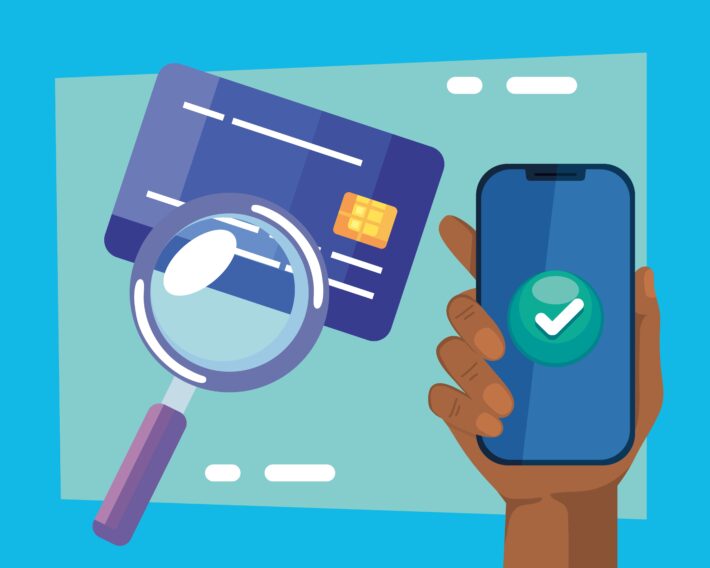Key Benefits Of Implementing Identity Verification Systems
In a digital age where online interactions are prevalent, guaranteeing the security and legitimacy of user identities is essential. Identity verification is a key component in combating fraud, safeguarding data, and nurturing trust between companies and their clientele. This article will examine the significance of identity verification, the dangers of inadequate systems, implementation of Identity verification, various verification methods, and the advantages of their implementation. Let’s explore the realm of identity verification and its primary benefits.
What Is Identity Verification?
Identity verification involves confirming a person’s identity electronically using various systems and methods. It is crucial for establishing and validating digital identities.
Through identity verification, individuals can demonstrate their authenticity in online transactions, account creations, access to restricted information, and other scenarios. This process typically includes cross-referencing personal information with official records or documents, biometric data, two-factor authentication, and other advanced security measures. By ensuring that only authorized individuals have access to sensitive data and services, identity verification helps reduce risks related to identity theft, fraud, and unauthorized access.
In today’s digital landscape, where cyber threats are constantly changing, robust identity verification mechanisms are essential for safeguarding personal and organizational data.
Why Is Identity Verification Important?
Identity verification is crucial for maintaining security, ensuring compliance with regulations, preventing fraud, and fostering customer trust. It is a critical component in safeguarding sensitive information.
By confirming the identity of individuals, businesses can establish a secure and trusted environment for conducting transactions and exchanging sensitive data. Identity verification plays a pivotal role in adhering to regulatory requirements, such as KYC (Know Your Customer) and AML (Anti-Money Laundering) laws, which are crucial for financial institutions and other regulated entities.
In the digital age, where cyber threats are prevalent, implementing robust identity verification processes is imperative for ensuring data protection and preventing unauthorized access to systems and resources.
What Are the Risks of Not Implementing Identity Verification Systems?
The absence of robust identity verification systems can expose businesses to significant risks, including increased instances of fraud, compromised security, higher susceptibility to identity theft, and challenges in effective risk management.
Without adequate identity verification measures, businesses open themselves up to various fraudulent activities. Fraudsters can exploit weaknesses in verification processes to manipulate systems, gain unauthorized access to sensitive data, and perpetrate financial scams.
Insufficient identity verification can result in a rise in identity theft cases, where personal information is stolen and abused for illicit purposes.
Security breaches become more common when individuals can easily falsify their identities, posing a serious threat to the confidentiality and integrity of business operations.
What Are the Different Types of Identity Verification?
Identity verification includes a range of methods, such as document verification, biometric verification, and knowledge-based verification, each offering unique approaches to confirming an individual’s identity.
Document verification involves validating official documents like IDs, passports, or utility bills to electronically verify a person’s identity. In contrast, biometric verification uses unique physical characteristics such as fingerprints, facial recognition, or iris scans for authentication. On the other hand, knowledge-based verification requires individuals to answer specific questions or provide personal details that only the true identity holder would know.
Hence, these methods serve different purposes, with document verification being commonly used in financial institutions, biometric verification in high-security areas, and knowledge-based verification in online account setups.
1. Document Verification
Document verification is a process that validates the authenticity of identity documents to ensure accurate identity validation and data protection. This crucial process involves thorough examination and cross-referencing of personal information provided by individuals with the details on their submitted documents. By verifying the legitimacy of documents such as IDs, passports, and utility bills, organizations can mitigate risks associated with fraud and identity theft.
Document verification plays a vital role in compliance with legal regulations and industry standards, safeguarding sensitive data and enhancing overall security measures. Through advanced technologies like biometric verification and AI algorithms, the process has become more efficient and reliable in validating user identities.
2. Biometric Verification
Biometric verification involves using distinct biological characteristics such as fingerprints or facial recognition to confirm identities, strengthening security measures, enabling secure transactions, and enhancing fraud detection.
This technology is essential for ensuring that only authorized individuals can access sensitive information and resources. Additionally, by leveraging inherent traits, biometric verification offers a higher level of security compared to traditional methods like passwords or PIN codes, which are more susceptible to compromise.
The process of biometric authentication is seamless for users, reducing the risk of identity theft and providing a convenient and efficient way to access personal accounts or conduct secure transactions. With its growing adoption across various industries, from banking to healthcare, biometric verification remains a reliable tool for enhancing security measures and protecting against potential threats.
3. Knowledge-Based Verification
Knowledge-based verification relies on user-provided information to authenticate identities, offering a method for user authentication and fraud prevention. This approach typically involves asking users to provide answers to security questions or details that only the legitimate account owner would know, such as a favorite teacher’s name or the model of their first car. Additionally, by verifying this knowledge against the stored data associated with the user profile, organizations can enhance security measures and reduce the risk of unauthorized access or fraudulent activities.
Knowledge-based verification adds an additional layer of protection against identity theft and account breaches, making it a valuable tool in safeguarding sensitive information.
How Do Identity Verification Systems Work?
Identity verification systems function through real-time verification using automated processes to authenticate user identities in an efficient and secure manner. These systems employ advanced technologies like biometric identification, document verification, and facial recognition to verify the authenticity of the user’s identity.
Additionally, by integrating seamlessly with established databases and financial institutions, these systems can rapidly cross-check information to confirm an individual’s identity within seconds. This swift and precise verification process not only improves security protocols but also simplifies user authentication, creating a smooth experience for individuals engaging with different online platforms.
1. Document Verification Process
The document verification process includes verifying the validity of identity documents to confirm the user’s identification and ensure accurate identity verification. This process is essential for establishing the authenticity of individuals presenting different forms of identification, like driver’s licenses, passports, or national identity cards.
After the document is submitted, the verification process involves scanning the document for security features, cross-referencing the information provided with external databases, and evaluating the overall integrity of the document. This thorough verification not only protects against identity theft and fraud but also ensures compliance with regulatory requirements and improves the security protocols of organizations handling sensitive information.
2. Biometric Verification Process
The biometric verification process matches unique biological traits to verify identities securely, enabling users to access systems through secure login procedures.
Biometric verification utilizes physical attributes such as fingerprints, facial recognition, iris scans, or voice patterns to ensure the accurate identification of individuals. This process not only enhances security by preventing unauthorized access but also provides a convenient and efficient means of user authentication.
By linking the individual’s unique biological markers to their digital credentials, biometric technology offers a robust solution for combating identity theft and fraud, making it a vital component in modern authentication systems.
3. Knowledge-Based Verification Process
The knowledge-based verification process ensures secure access and user privacy by using authentication methods based on information provided by the user. This method includes asking users unique questions that only they would be able to answer, helping to verify their identity. By utilizing personal details like birthdates, previous addresses, or favorite pet names, the system can confirm the user’s identity accurately without risking their privacy. This approach aids in preventing unauthorized access and protects sensitive data from potential breaches. Knowledge-based verification enhances the security of the authentication process, improving the system’s reliability and fostering user trust.
What Are the Benefits of Implementing Identity Verification Systems?
The implementation of identity verification systems provides several advantages, such as fraud prevention, increased customer trust, enhanced security, and more efficient operations. Additionally, by incorporating strong identity verification measures, businesses can reduce the likelihood of fraudulent behavior, protecting sensitive data and financial resources. This not only builds trust with customers but also strengthens the overall security infrastructure.
Hence, integrating these systems results in operational efficiency by minimizing manual tasks and speeding up customer onboarding processes. The adoption of identity verification systems is a strategic decision that offers lasting benefits for companies in terms of risk control and customer contentment.
1. Prevents Identity Theft and Fraud
Identity verification solutions are essential in preventing identity theft and fraud by providing strong authentication methods and facilitating effective fraud investigation procedures.
These solutions function by confirming individuals’ identities through diverse methods, such as document verification, biometric authentication, and facial recognition technology. Additionally, by validating the authenticity of a person’s identity, businesses can secure transactions and reduce the vulnerabilities linked to fraudulent behaviors.
Identity verification solutions aid in regulatory compliance and build customer confidence by delivering a seamless and secure user experience. These solutions are vital instruments in combating identity theft and fraud in the current digital environment.
2. Improves Customer Trust and Satisfaction
Implementing identity verification systems is important for fostering customer trust and satisfaction by providing a secure platform for user interactions and enhancing the overall user experience.
These systems are crucial for safeguarding sensitive information, such as personal data and financial details, from potential threats. Additionally, by verifying the identity of users, platforms can ensure that only genuine individuals have access, thus minimizing the risk of fraudulent activities. This not only protects users but also creates a sense of security and reliability, leading to increased confidence in the platform. The seamless verification process contributes to a positive user experience, reducing friction in onboarding and transaction processes.
3. Streamlines Onboarding Processes
Identity verification systems simplify customer onboarding processes by facilitating smooth integration, establishing a secure environment for new user registrations, and interactions.
These systems are vital in fostering trust and credibility between businesses and their customers. By verifying users’ identities effectively, companies can reduce fraudulent behaviors and adhere to regulatory standards.
The automated functionality of these systems conserves time and resources for both the organization and its customers, resulting in a more effective onboarding procedure. Given the increasing focus on data security and confidentiality, incorporating robust identity verification solutions has become a necessity for businesses in diverse sectors.
4. Ensures Compliance with Regulations
The implementation of identity verification systems helps organizations adhere to regulatory requirements and industry standards, enabling them to fulfill legal obligations and maintain regulatory compliance.
These systems are essential for confirming the identity of individuals, customers, or employees by comparing personal information with reliable databases or official documents. By verifying user identities, organizations can reduce the risks related to fraud, money laundering, and other illegal activities, promoting a safer and more secure operational environment. Also, identity verification systems aid in enforcing age restrictions, preventing unauthorized access to sensitive data, and protecting against identity theft, ultimately strengthening overall compliance endeavors.
5. Reduces Operational Costs
Reducing risks related to identity verification helps organizations decrease operational costs and improve risk management strategies, resulting in enhanced efficiency and cost-effectiveness.
These systems are important for streamlining processes and preventing fraud, which helps minimize potential losses. Additionally, automating the verification process allows companies to save time and resources that would have been used for manual checks. This not only increases data accuracy but also enhances customer trust and satisfaction. Efficient identity verification systems assist in meeting regulations and upholding a positive reputation in the market, ultimately supporting continuous business growth and competitiveness.
Frequently Asked Questions
What are the key benefits of implementing identity verification systems?
The key benefits of implementing identity verification systems include increased security, reduced risk of fraud, improved customer trust, compliance with regulations, streamlined onboarding processes, and better data management.
How does implementing identity verification systems improve security?
Identity verification systems utilize various verification methods such as biometric authentication, document verification, and identity proofing to ensure that the person accessing a system or service is who they claim to be. Additionally, this significantly reduces the risk of unauthorized access and protects sensitive information.
What is the role of identity verification systems in reducing fraud?
By verifying the identity of individuals before granting access or providing services, identity verification systems can prevent fraudulent activities such as identity theft, account takeovers, and fake account creations. This helps organizations save money and maintain their reputation.
How does implementing identity verification systems improve customer trust?
Identity verification systems can help organizations build trust with their customers by providing a secure and reliable means of verifying their identities. Also, this can enhance the overall customer experience, leading to increased customer loyalty and satisfaction.
How do identity verification systems ensure compliance with regulations?
Identity verification systems have built-in compliance checks and procedures that help organizations adhere to regulatory requirements, such as Know Your Customer (KYC) and Anti-Money Laundering (AML) regulations. Additionally, this ensures that organizations are not only protecting themselves but also complying with legal obligations.
How do identity verification systems streamline onboarding processes?
By automating the identity verification process, these systems can significantly reduce the time and effort required for onboarding new customers or employees. This not only saves resources but also improves the overall efficiency of the onboarding process.



